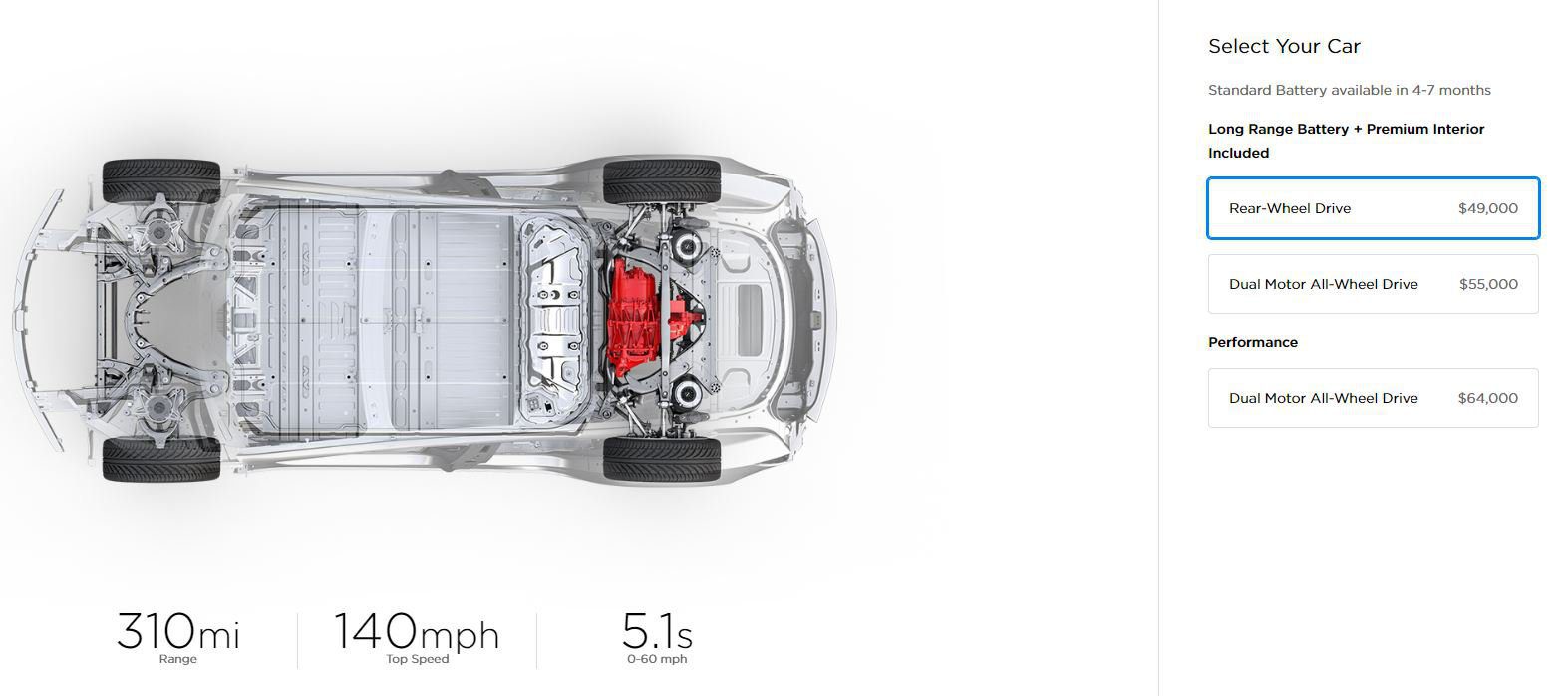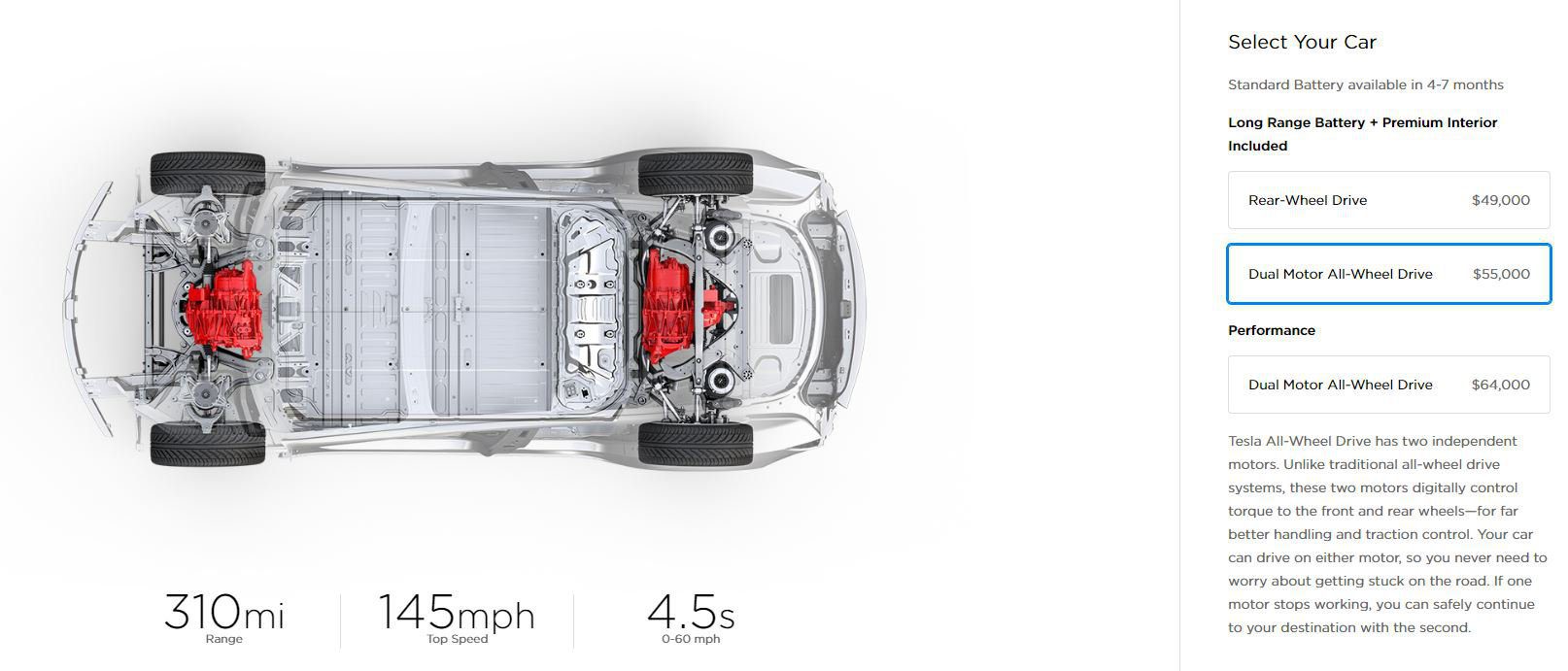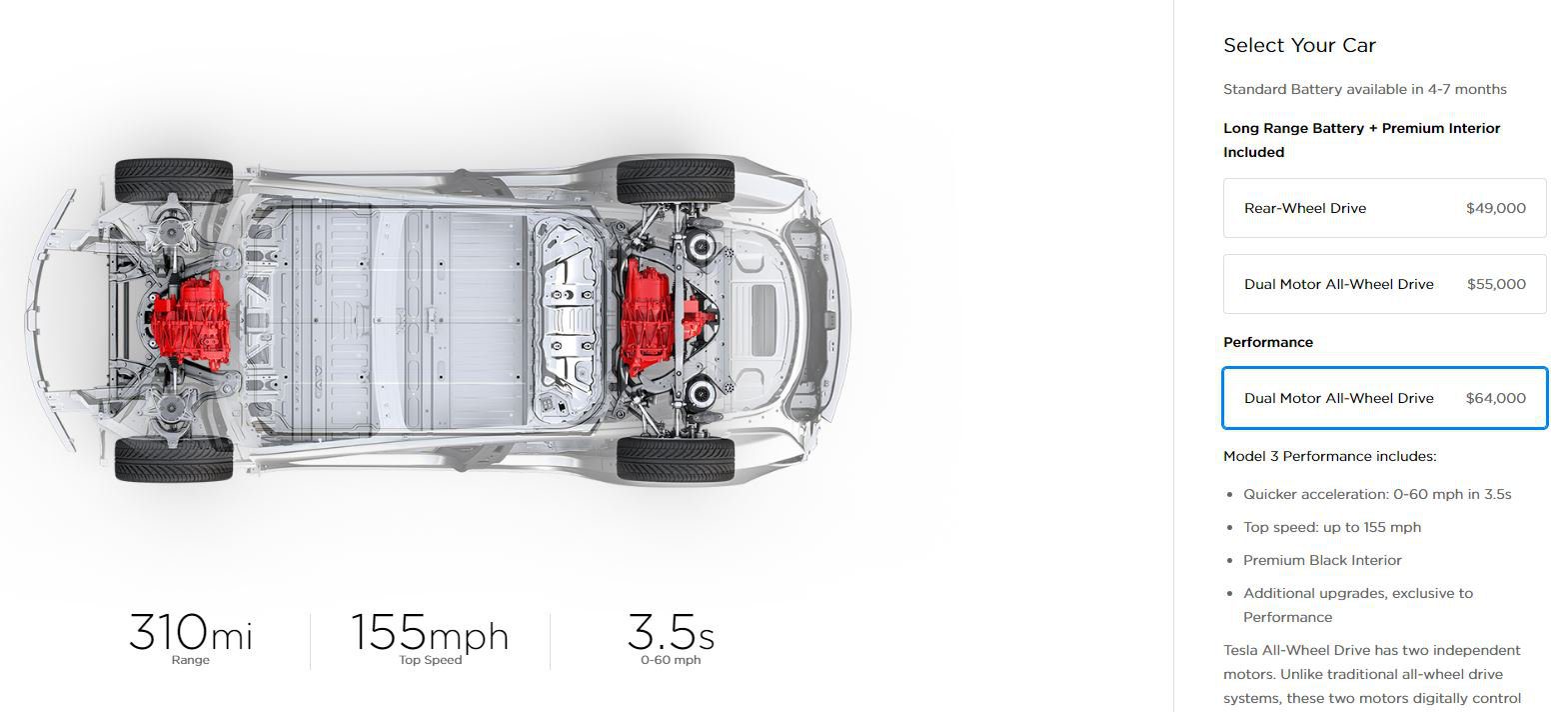Australian customers for the “mass market” Tesla Model 3 electric vehicle have had to wait a long time for the car they have coveted – and paid a deposit for – since its unveiling more than two years ago. But it might be worth the wait.
News out of the US is that Tesla, Elon Musk’s pioneering electric car company, is ready to start producing the “low cost” version of the Model 3, rather than the long range and performance models it has been delivering to date.
That means, for Australian customers, that by the time Tesla gets round to building right-hand drive versions of the car in mid 2019, for deliveries to Australia and the UK, then customers will have a choice between the base $US35,000 – the so-called category killer for petrol cars, and more expensive models.
To date, Australians have only had access to the Model S and X – which with price points starting at $A136,910 and $A146,615 respectively, attract a luxury car tax and fall well out of the range of most Aussie drivers.
But the base model of the Model 3 will fall well below the luxury car threshold, as Alex Shooman pointed out when he made some educated estimates in this piece last year.
In the US, there are still only 3 models currently available – all with a long 500km range battery and premium interior, starting at $US49,000 for the rear wheel drive, $US55,000 for the dual motor all-wheel drive and $US64,000 for the performance version of the all-wheel drive.
Based on currency conversion rates, this means that the rear-wheel drive variant alone will fall under the Luxury Car Tax threshold – and adding too many options could push even that over into LCT territory.
This is where news that production of the base model (referred to as the Model 3 Standard by Shooman) sometime in the next 12 months comes in.
In the US, the base model (which will differ from the long range in that it will be kitted with the ‘standard battery pack’ which has 215-220 miles (about 350km) of range, will go for $US35,000 – which in Australia would translate as $A48,000 mark as a base price with no options or on road costs.
Even using Shooman’s formula, the base price would still be about $20,000 less than the current $75,526 LCT threshold for fuel efficient cars (this of course also begs the question why even is there a luxury car tax on EVs).
Of course, when it will get here is another question, as Tesla already postponed the production launch date for the Model 3 base model back in February 2018.
At the 2018 Annual Shareholder Meeting, Musk confirmed it would definitely happen, saying:
“Yes. We will definitely offer a $35,000 version of the Model 3. And probably at the end of this year is when we will be able to make a smaller version of the battery pack, and get into volume production of $35,000 version in Q1 next year. We would definitely honor that obligation, and we would do so right now if it were possible.”
Latest reports are that this will happen within the ‘next 8 months’, according to Worm Capital’s field notes on their recent Gigafactory visit this week.
That’s a bit outside of Musk’s previous estimates of starting production on the base model within 3-6 months of reaching 5,000k cars a week – that occurred at the beginning of July.
With production, 1st you need achieve target rate & then smooth out flow to achieve target cost. Shipping min cost Model 3 right away wd cause Tesla to lose money & die. Need 3 to 6 months after 5k/wk to ship $35k Tesla & live.
— Elon Musk (@elonmusk) May 21, 2018
As for Australians – while a release date is still not confirmed for even the long-range Model 3, Worm Capital did report that: “By next year they will start exporting Model 3s to other countries”.
The good news is that there is a knife’s edge chance that when it does get here, the standard Model 3 may sport the new modular battery hinted at by Musk at the last investor conference call, and for which production could begin in time for addition in the standard Model 3.
“We came up with a new design that achieves the same outcome, that’s actually lighter, better, cheaper and we will be introducing that around the end of this year – probably reach volume production on that in Q1 or something. That will make the car lighter, better, and cheaper and achieve a higher range.”

Bridie Schmidt is associate editor for The Driven, sister site of Renew Economy. She has been writing about electric vehicles since 2018, and has a keen interest in the role that zero-emissions transport has to play in sustainability. She has participated in podcasts such as Download This Show with Marc Fennell and Shirtloads of Science with Karl Kruszelnicki and is co-organiser of the Northern Rivers Electric Vehicle Forum. Bridie also owns a Tesla Model Y and has it available for hire on evee.com.au.





